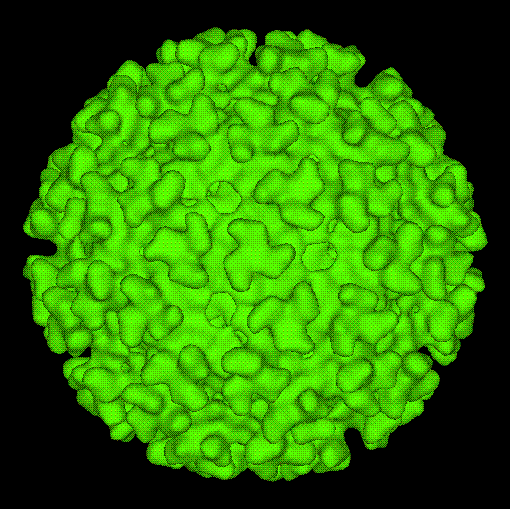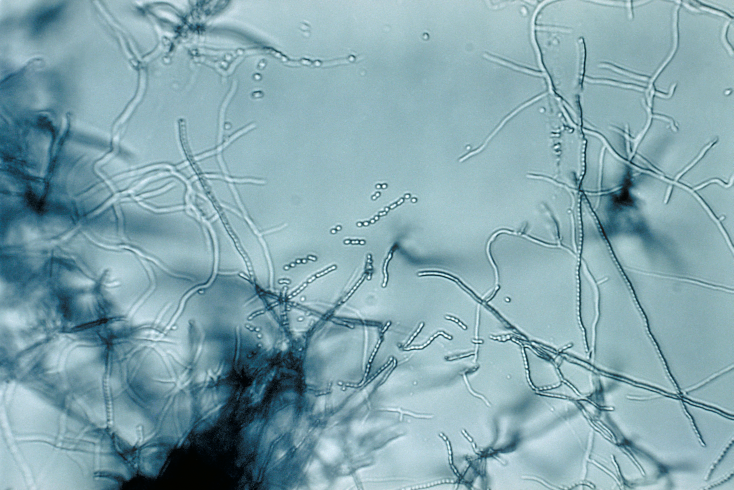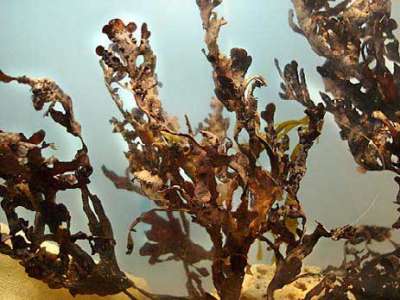



 1. Department of Molecular and Structural Biochemistry, North Carolina State University, Raleigh, North Carolina, USA.
1. Department of Molecular and Structural Biochemistry, North Carolina State University, Raleigh, North Carolina, USA.
2. Instituto de Microbiologia and Instituto Nacional de Ciência e Tecnologia em Biologia Estrutural e Bioimagem (INCTBEB), Federal University of Rio de Janeiro, RJ – Brazil
Os resultados publicados no Journal of Virology foram produzidos pela colaboração entre a Universidade da Carolina do Norte e a Universidade Federal do Rio de Janeiro, através do Instituto de Microbiologia e o Instituto Nacional de Ciência e Tecnologia em Biologia Estrutural e Bioimagem.
Os vírus iniciam o processo infeccioso transferindo seu genoma através da membrana celular da célula hospedeira. Para os alphavirus o modelo popular de penetração na célula compreende a entrada o vírus através de endocitose mediada por um receptor e fusão da membrana no endossomo.
Neste estudo utilizando técnicas de microscopia eletrônica e imunocitoquímica foi demonstrado que a entrada dos alphavirus ocorre através da penetração direta na membrana plasmática através de um poro formado pelo próprio vírus e possivelmente por proteínas na célula hospedeira.
Alphavirus genome delivery occurs directly at the plasma membrane in a time and temperature dependent process.
It is widely held that Arboviruses such as the Alphavirus Sindbis gain entry to cells by a process of receptor mediated endocytosis followed by membrane fusion in the acid environment of the endosome. We have used an approach of direct observation of Sindbis virus entry into ; cells by electron microscopy and immuno-labeling of virus proteins with antibodies conjugated to gold beads. We found that upon attaching to the cell surface intact RNA containing viruses became empty shells which could only be identified by antibody labeling. We found that the rate
at which full particles were converted to empty particles increased with time and temperature. We found that this entry event takes place at temperatures which inhibit both endosome formation and membrane fusion. We conclude that entry of alphaviruses is by direct penetration of cell plasma membranes through a pore structure formed by virus and, possibly, host proteins.
J Virol (2013),
doi:10.1128/JVI.03412-12
 Por Juliana Pacheco da Rosa, Elisa Korenblum, Marcella Novaes Franco-Cirigliano, Fernanda Abreu, Ulysses Lins, Rosângela M. A. Soares, Andrew Macrae, Lucy Seldin, and Rosalie R. R. Coelho
Por Juliana Pacheco da Rosa, Elisa Korenblum, Marcella Novaes Franco-Cirigliano, Fernanda Abreu, Ulysses Lins, Rosângela M. A. Soares, Andrew Macrae, Lucy Seldin, and Rosalie R. R. Coelho
Um actinomiceto, o Streptomyces lunalinharesii Strain 235 isolado de solo brasileiro demonstrou atividade antimicrobiana contra uma bactéria envolvida em processo de biocorrosão, a Desulfovibrio alaskensis NCIMB 1349.
Esta pesquisa descreve pela primeira vez uma substância isolada de um actinomiceto com ação contra uma bactéria causadora de biocorrosão e abre um caminho para a descoberta de novas substancias biocidas com aplicação industrial principalmente na indústria petroleira.
Streptomyces lunalinharesii Strain 235 Shows the Potential to Inhibit Bacteria Involved in Biocorrosion Processes
Four actinomycete strains previously isolated from Brazilian soils were tested for their antimicrobial activity against Bacillus pumilus LF-4 and Desulfovibrio alaskensis NCIMB 13491, bacteria that are well known to be involved in biolm formation and biocorrosion. Strain 235, belonging to the species Streptomyces lunalinharesii, inhibited the growth of both bacteria. e antimicrobial activity was seen over a wide range of pH, and aer treatment with several chemicals and heat but not with proteinase K and trypsin.
The antimicrobial substances present in the concentrated supernatant from growth media were partially characterized by SDS-PAGE and extracellular polypeptides were seen. Bands in the size range of 12 to 14.4 kDa caused antimicrobial activity. Transmission electron microscopy of D. alaskensis cells treated with the concentrated supernatant containing the antimicrobial substances revealed the formation of prominent bubbles, the spherical double-layered structures on the cell membrane, and the periplasmic space completely filled with electron-dense material. This is the frst report on the production of antimicrobial substances by actinomycetes against bacteria involved in biocorrosion processes, and these fndings may be of great relevance as an alternative source of biocides to those currently employed in the petroleum industry.
BioMed Research International
Volume 2013, Article ID 309769
 Por Lauro M. de Souza , Guilherme L. Sassaki , Maria Teresa Villela Romanos and Eliana Barreto-Bergter
Por Lauro M. de Souza , Guilherme L. Sassaki , Maria Teresa Villela Romanos and Eliana Barreto-Bergter
Um sulfolipídio foi isolado e caracterizado da alga vermelha Osmundaria Obtusiloba, coletada no Brasil, especificamente na praia rasa em Búzios. Esta macroalga tem sido alvo de diversos estudos e substâncias bioativas de importância medicinal têm sido isoladas.
Este sulfulipídio éum glicolipídio e mostrou atividade contra os vírus do Herpes simples que são responsáveis por infecções humanas com o HSV-1 (Herpes oral ou labial) e HSV-2 (Herpes genital). Apesar de o aciclovir ser a droga de escolha, para estas infecções virais, a existência de cepas resistentes faz com que a pesquisa de novas substâncias com atividade contra este grupo de vírus seja de grande importância. O sulfolipidio além de demonstrar excelente ação antiviral apresenta baixa toxidade em culturas de células.
Structural Characterization and Anti-HSV-1 and HSV-2 Activity of Glycolipids from the Marine Algae Osmundari obtusiloba Isolated from Southeastern Brazilian Coast
Glycolipids were extracted from the red alga Osmundaria obtusiloba from Southeastern Brazilian coast. The acetone insoluble material was extracted with chloroform/methanol and the lipids, enriched in glycolipids, were fractionated on a silica gel column eluted with chloroform, acetone and then methanol. Three major orcinol-positive bands were found in the acetone and methanol fractions, being detected by thin layer chromatography. The structures of the corresponding glycolipids were elucidated by ESI-MS and 1 H/ 13 C NMR analysis, on the basis of their tandem-MS behavior and HSQC, TOCSY fingerprints. For the first time, the structure of sulfoquinovosyldiacylglycerol from the red alga Osmundaria obtusiloba was characterized. This molecule exhibited potent antiviral activity against HSV-1 and HSV-2 with EC 50 values of 42 µg/mL to HSV-1 and 12 µg/mL to HSV-2, respectively. Two other glycolipids, mono- and digalactosyldiacylglycerol, were also found in the alga, being characterized by ESI-MS/MS. The structural elucidation of algae glycolipids is a first step for a better understanding of the relation between these structures and their biological activities.
Trabalho publicado no periódico: Marine Drugs
